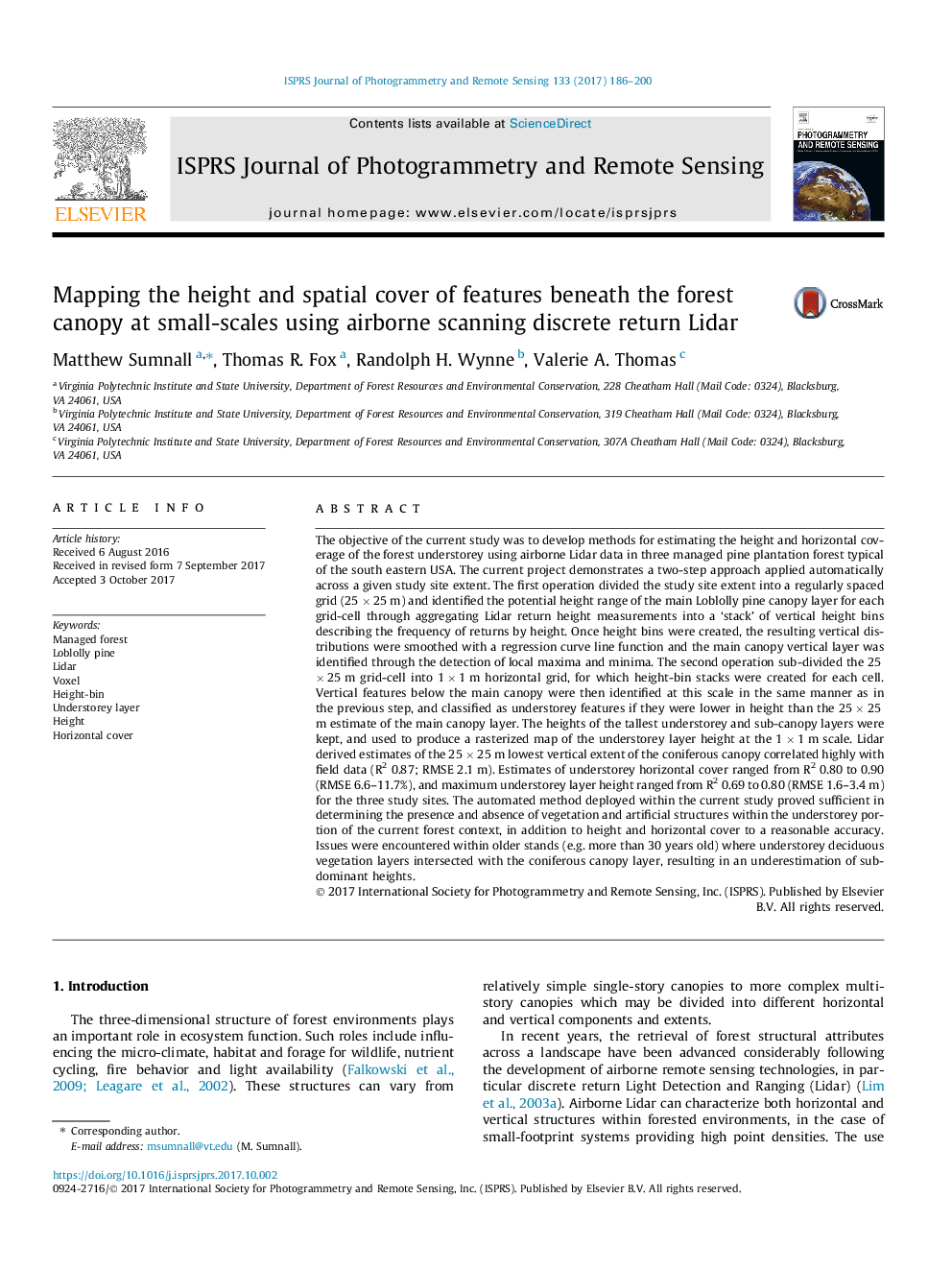| Article ID | Journal | Published Year | Pages | File Type |
|---|---|---|---|---|
| 6949277 | ISPRS Journal of Photogrammetry and Remote Sensing | 2017 | 15 Pages |
Abstract
The objective of the current study was to develop methods for estimating the height and horizontal coverage of the forest understorey using airborne Lidar data in three managed pine plantation forest typical of the south eastern USA. The current project demonstrates a two-step approach applied automatically across a given study site extent. The first operation divided the study site extent into a regularly spaced grid (25â¯Ãâ¯25â¯m) and identified the potential height range of the main Loblolly pine canopy layer for each grid-cell through aggregating Lidar return height measurements into a 'stack' of vertical height bins describing the frequency of returns by height. Once height bins were created, the resulting vertical distributions were smoothed with a regression curve line function and the main canopy vertical layer was identified through the detection of local maxima and minima. The second operation sub-divided the 25â¯Ãâ¯25â¯m grid-cell into 1â¯Ãâ¯1â¯m horizontal grid, for which height-bin stacks were created for each cell. Vertical features below the main canopy were then identified at this scale in the same manner as in the previous step, and classified as understorey features if they were lower in height than the 25â¯Ãâ¯25â¯m estimate of the main canopy layer. The heights of the tallest understorey and sub-canopy layers were kept, and used to produce a rasterized map of the understorey layer height at the 1â¯Ãâ¯1â¯m scale. Lidar derived estimates of the 25â¯Ãâ¯25â¯m lowest vertical extent of the coniferous canopy correlated highly with field data (R2 0.87; RMSE 2.1â¯m). Estimates of understorey horizontal cover ranged from R2 0.80 to 0.90 (RMSE 6.6-11.7%), and maximum understorey layer height ranged from R2 0.69 to 0.80 (RMSE 1.6-3.4â¯m) for the three study sites. The automated method deployed within the current study proved sufficient in determining the presence and absence of vegetation and artificial structures within the understorey portion of the current forest context, in addition to height and horizontal cover to a reasonable accuracy. Issues were encountered within older stands (e.g. more than 30 years old) where understorey deciduous vegetation layers intersected with the coniferous canopy layer, resulting in an underestimation of sub-dominant heights.
Related Topics
Physical Sciences and Engineering
Computer Science
Information Systems
Authors
Matthew Sumnall, Thomas R. Fox, Randolph H. Wynne, Valerie A. Thomas,
